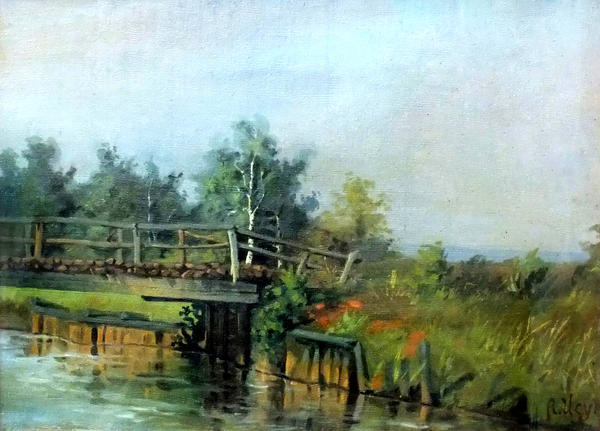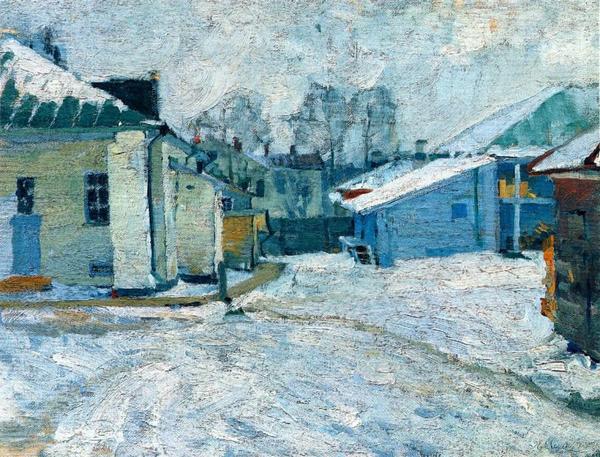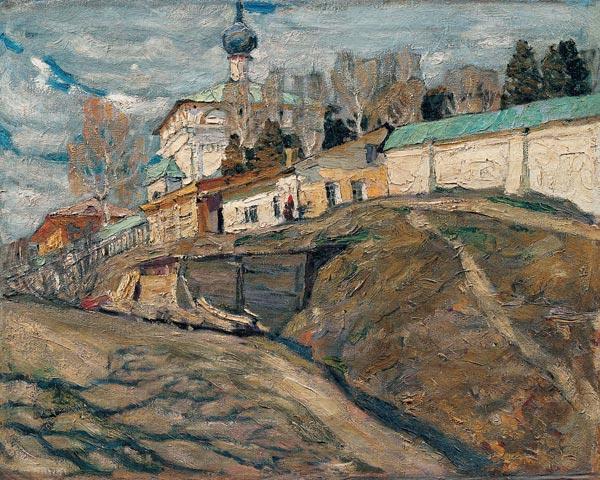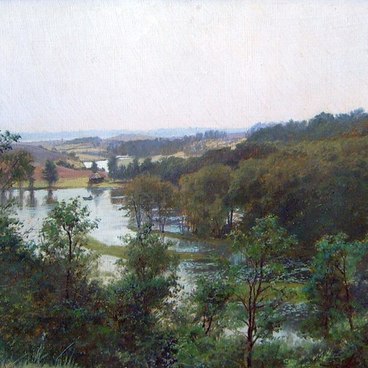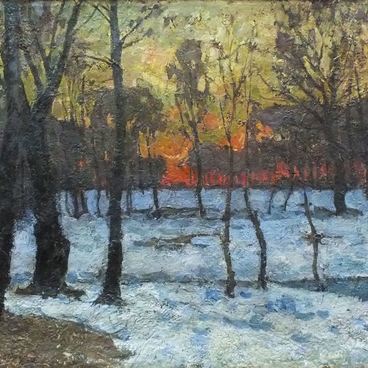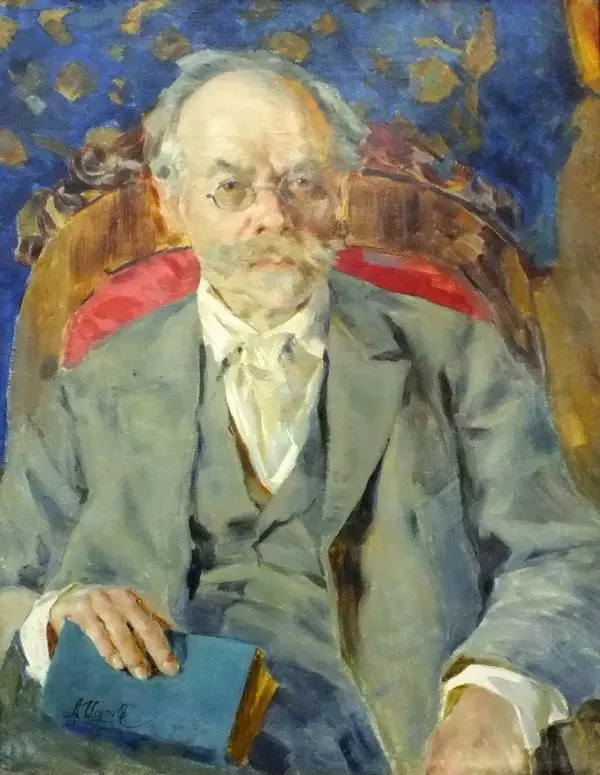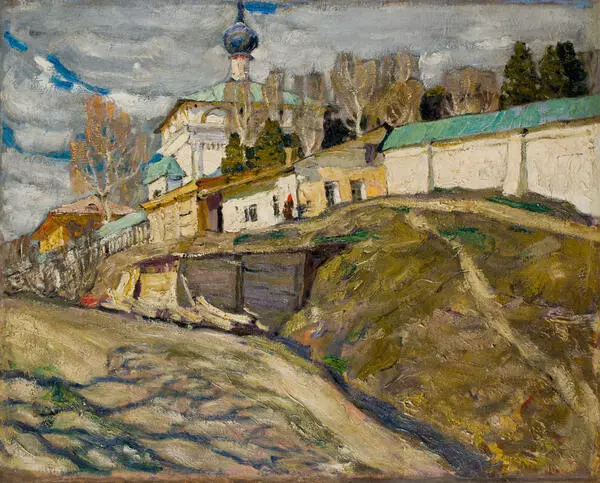Alexei Isupov left a rich artistic legacy. He was one of the Russian plein-air artists, or, as they are also called, Russian impressionists.
Landscape with a Bridge was created in the first year of study at the Moscow School of Painting, Sculpture and Architecture. The painting is performed in quiet tones with soft light transitions. It’s a work of a master with a shade of light that draws attention to itself. Like many other works by Isupov Landscape with a bridge seems to be filled with light from the inside. This sunlight, which barely penetrates the cloudy sky, gently illuminates the whole picture.
Isupov was born in Vyatka (now Kirov). Up to the age of nineteen he studied drawing with foreign icon painters and local masters. He worked a lot on his own. Since 1903, when the boy was only fourteen, his works were taken to local art exhibitions. Later, in 1908, he used the money made from the sale of his own sketches to pay for his education in Moscow. His parents didn’t support his idea to enter the Moscow School of Painting, sculpture and architecture, because the family had no means.
In the famous school Isupov studied with the masters: Abram Arkhipov, Valentin Serov, Apollinary Vasnetsov, Konstantin Korovin. He had a particularly warm relationship with the last two. Vasnetsov liked Isupov for his great desire to learn and, moreover, they were fellow countrymen. Apollinary Vasnetsov’s son Vsevolod Vasnetsov wrote in his memoirs that his father paid special attention to Isupov, often invited him for an evening cup of tea to talk about art, expand his horizons… gradually introduced him into the circle of artists, helped to make some money. Konstantin Korovin also made a significant influence on the formation of the artist and his style.
During his studies, Isupov presented his paintings at exhibitions of the Union of Russian Artists. In these student works the extraordinary artistic gift of the painter had already fully manifested itself. The famous Soviet artist Vasily Meshkov recalled later: “Figuratively speaking, I was born with a palette in my hand, but every time I saw artwork of Alexei Isupov, I thought with admiration: no, he is head and shoulders above us all. I, personally, felt that I couldn”t do what he could.”
Having finished with studying, Isupov travelled with a sketchbook all over the Urals, along the Volga River and in the Crimea. In 1915 he got drafted into the army and served in Central Asia for two years. After the revolution he went back there again. In 1920, the People’s Commissariat of Culture sent him to Uzbekistan as head of the art section of the Commission for the Restoration and Protection of Monuments of Samarkand. There, the artist made sketches of antiquities, studied archeology, history, culture, artistic traditions of Central Asia. During these years the artist produces a series of works dedicated to the understanding of the ancient culture of the East, as well as illustrations for the album Ulugbek, in which the artist interprets the characteristic techniques of oriental miniature and Old Russian icons in his own way.
In 1921 Aalexey Isupov returns to Moscow, but five years later an illness forces him to leave Russia for Italy for good.
Landscape with a Bridge was created in the first year of study at the Moscow School of Painting, Sculpture and Architecture. The painting is performed in quiet tones with soft light transitions. It’s a work of a master with a shade of light that draws attention to itself. Like many other works by Isupov Landscape with a bridge seems to be filled with light from the inside. This sunlight, which barely penetrates the cloudy sky, gently illuminates the whole picture.
Isupov was born in Vyatka (now Kirov). Up to the age of nineteen he studied drawing with foreign icon painters and local masters. He worked a lot on his own. Since 1903, when the boy was only fourteen, his works were taken to local art exhibitions. Later, in 1908, he used the money made from the sale of his own sketches to pay for his education in Moscow. His parents didn’t support his idea to enter the Moscow School of Painting, sculpture and architecture, because the family had no means.
In the famous school Isupov studied with the masters: Abram Arkhipov, Valentin Serov, Apollinary Vasnetsov, Konstantin Korovin. He had a particularly warm relationship with the last two. Vasnetsov liked Isupov for his great desire to learn and, moreover, they were fellow countrymen. Apollinary Vasnetsov’s son Vsevolod Vasnetsov wrote in his memoirs that his father paid special attention to Isupov, often invited him for an evening cup of tea to talk about art, expand his horizons… gradually introduced him into the circle of artists, helped to make some money. Konstantin Korovin also made a significant influence on the formation of the artist and his style.
During his studies, Isupov presented his paintings at exhibitions of the Union of Russian Artists. In these student works the extraordinary artistic gift of the painter had already fully manifested itself. The famous Soviet artist Vasily Meshkov recalled later: “Figuratively speaking, I was born with a palette in my hand, but every time I saw artwork of Alexei Isupov, I thought with admiration: no, he is head and shoulders above us all. I, personally, felt that I couldn”t do what he could.”
Having finished with studying, Isupov travelled with a sketchbook all over the Urals, along the Volga River and in the Crimea. In 1915 he got drafted into the army and served in Central Asia for two years. After the revolution he went back there again. In 1920, the People’s Commissariat of Culture sent him to Uzbekistan as head of the art section of the Commission for the Restoration and Protection of Monuments of Samarkand. There, the artist made sketches of antiquities, studied archeology, history, culture, artistic traditions of Central Asia. During these years the artist produces a series of works dedicated to the understanding of the ancient culture of the East, as well as illustrations for the album Ulugbek, in which the artist interprets the characteristic techniques of oriental miniature and Old Russian icons in his own way.
In 1921 Aalexey Isupov returns to Moscow, but five years later an illness forces him to leave Russia for Italy for good.

